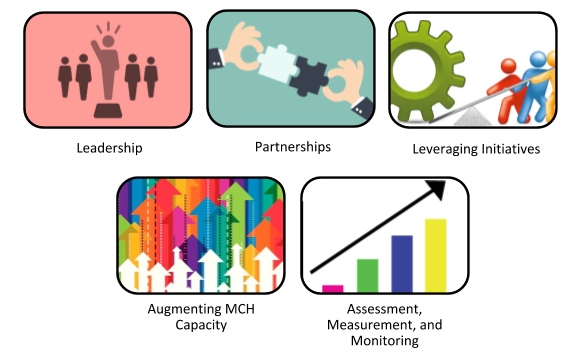Since the onset of the national movement by Title V to combat infant mortality rates using a uniform learning collaborative, state Title V Maternal and Child Health programs have partaken in a number of collaborative improvement and innovation networks (CoIINs) supported by the federal Maternal and Child Health Bureau. Based on the model from the Institute on Healthcare Improvement, CoIINs rely on real-time or reasonably current data and metrics to assess implementation strategies, or “tests of change.” Since there is emphasis on rapid-cycle improvement activities, using “good-enough” data is essential, to identify progress and help accelerate solutions to challenges that affect the MCH eco-system. These methods have been typically successful in smaller, clinical, and more controlled settings. But how do these concepts translate when seeking to improve care on a more population-focused aim, and where more time is needed? And how can the MCH workforce and its partners adapt and respond with this approach when it comes to young people’s mental health?
With the launch of the Adolescent and Young Adult (AYA)-Behavioral Health CoIIN in 2019, AMCHP was tasked with developing the best way for state public health CoIIN teams to measure their contributions to their unique state aims, as well as the overarching CoIIN Goal: Achieve an 80% screening rate of patients ages 12-25 for a major depressive episode using an age-appropriate standardized tool with documentation of a follow-up plan if the screen is positive. Following the CoIIN motto of “share seamlessly, steal shamelessly,” the Adolescent and Young Adult Health-National Resource Center partners examined how other collaboratives measured macro-level improvements, using metric examples from the Infant Mortality CoIIN Social Determinants of Health learning network, as well as measures from the Promoting Innovation in State & Territorial MCH Policymaking (PRISM) initiative. From there, we adapted a measurement framework, originally created by AMCHP’s Infant Mortality CoIIN team, Kay Johnson, and Milt Kotelchcuk, to determine where state teams were at baseline, and provide guidance on what levers to pull in order to see some sort of change within their system level opportunities to address depression screening and treatment referrals. We landed on five main pillars:

Each of the five components offers guidance and examples on practice and policies changes that intend to increase the capacity of Title V and its public health and community champions to address mental health screenings and referrals for AYAs. Eager to learn specifically what’s involved under each of these measures? The blog will unpack each of these categories in upcoming posts, beginning in January 2020.
